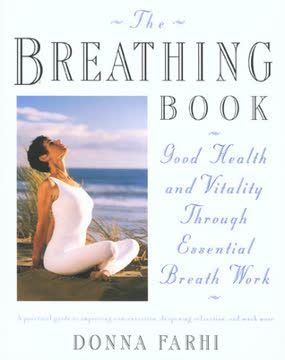Key Takeaways
1. Conscious Breathing is Essential for Thriving, Not Just Surviving
This automatic breath allows you to survive, but when you unconsciously hold or restrict your breath through habit, the breath that once so conveniently breathed you becomes automatically restricted and distorted.
Unconscious restrictions. While breathing is an automatic bodily function vital for survival, unconscious habits of holding or restricting our breath prevent us from truly thriving. Our breath profoundly influences every system—respiratory, cardiovascular, neurological, gastrointestinal, muscular, and psychic—impacting sleep, memory, energy levels, and concentration. In today's high-stress environment, our internal metronome often accelerates, leading to feelings of being "stressed out" or "burned out."
Ancient wisdom, modern science. Both ancient Eastern traditions and contemporary Western science unequivocally agree that proper breathing is a cornerstone of health and well-being. When we breathe optimally, we create the ideal conditions for health, mitigating risks for illnesses such as heart disease and high blood pressure. Reclaiming the full, vital breath of a newborn isn't about acquiring new techniques, but rather about dismantling the obstacles we've unconsciously constructed.
A "how-to-undo" guide. The path to recovery demands conscious awareness and active participation. By refining the quality of our breathing, we can positively impact all facets of our existence, addressing the very core of the stress response. This book serves as a "how-to-undo" guide, empowering us to rediscover the naturalness of our breath and reclaim forgotten dimensions of our lives.
2. Your Breath Reflects Your Life: Uncover, Don't Control
The process of breathing is the most accurate metaphor we have for the way that we personally approach life, how we live our lives, and how we react to the inevitable changes that life brings us.
Life's metaphor. Breathing serves as a profound metaphor for how we navigate life, often mirroring our tendencies to control, grasp, or push away. The "essential breath" embodies a way of living free from these efforts, allowing life to flow naturally. This unconditioned breath, reminiscent of a child's effortless respiration, represents our most accessible and potent resource for vital energy, frequently lost in adulthood.
Automatic yet altered. While respiration is primarily an involuntary process, our ingrained habits can unconsciously alter and restrict it. Shallow breathing, constant sighing, breath-holding, or abdominal tension become automatic, leading to a disordered state. True recovery necessitates delving into this deep level of unconscious alteration to restore the breath's inherent flexibility, rather than relying on superficial mechanical exercises.
Relaxation, not effort. Recovering the essential breath is a deeply enriching process of self-discovery. It involves focusing on and perceiving our breathing, thereby making the unconscious conscious. The objective isn't to force a "deep" breath, but to patiently inquire, feel, and sense, releasing preconceived notions. The paradox of free breathing is that it emerges from profound relaxation, not strenuous effort.
3. The Body's Three Diaphragms are Key to Full, Effortless Breathing
The movement of any one diaphragm affects all the others.
Synchronized domes. Beyond the primary respiratory diaphragm, two other crucial diaphragms—the pelvic and vocal—are integral to effective breathing. These three dome-shaped structures, positioned perpendicularly along the body's vertical axis, operate in intricate synchrony. During inhalation, the central diaphragm lowers, the pelvic diaphragm billows downward, and the vocal folds open. Conversely, during exhalation, they retract and close.
The "second heart." The central diaphragm, a vast, parachute-shaped muscle, accounts for 75% of all respiratory effort. With each expansive movement, it gently massages vital organs such as the heart, stomach, liver, and kidneys, bathing them in fresh blood and oxygen. This internal, rhythmic movement is fundamental for physical well-being and facilitates communication between our rational intellect and our instinctual nature.
Interconnected restriction. Breath holding frequently stems from chronic contraction of these interconnected diaphragms. A perpetually tightened abdomen and pelvic floor impede the central diaphragm's descent, forcing weaker secondary muscles in the upper chest and neck to compensate. Similarly, tension in the throat and vocal diaphragm indirectly restricts the central diaphragm's free movement. Releasing these three diaphragms is paramount for restoring full, effortless breathing.
4. Identify and Dismantle Your Specific Breath Holding Patterns
Learning to breathe well is not an additive process in which you learn specific techniques for improving the breathing you already have. It is a process of deconstruction where you learn to identify the things you are already doing that restrict the natural emergence of the breath.
Modern stress response. Modern life's relentless stimulation constantly triggers our ancient "fight, flight, freeze, or fake-it" response. This chronic activation leads to disordered breathing patterns that become ingrained habits, causing our nervous system to recalibrate and maintain a state of hyperalertness. Recognizing these specific patterns is the crucial first step toward transforming our stress response.
Common patterns: People restrict their breathing in distinct ways:
- Reverse Breathing: Abdomen pulls in on inhale, pushes out on exhale, causing internal confusion and upper body tension.
- Chest Breathing: Abdomen is held tight, forcing breath high into the chest, leading to chronic anxiety, neck/shoulder tension, and impaired organ function.
- Collapsed Breathing: Chest is drawn down, shoulders hunch, and belly protrudes, often linked to disassociation and depression.
- Hyperventilation: Breathing too rapidly, resulting in excessive CO2 loss, brain constriction, muscle tension, and nervous system over-excitability.
- Throat Holding: Tightening the vocal diaphragm to suppress emotions, causing jaw/neck tension and a higher-pitched voice.
- Breath Grabbing: Prematurely inhaling without allowing a natural pause after exhalation, leading to feelings of being rushed.
- Frozen Breathing: The entire outer body contracts, suppressing breath, often driven by fear or post-traumatic stress.
The "undoing" process. Dismantling these patterns is an "undoing" process. When you detect tension in areas like the throat, abdomen, pelvic floor, or shoulders, consciously relax and release them on an exhalation. Exaggerating the tension for a few seconds before releasing it helps clarify the difference between contraction and relaxation. This continuous practice, integrated throughout your day, is more potent than direct manipulation, addressing the unconscious impulse to control life's flow.
5. Open Your Body's Channels to Allow the Breath to Flow Freely
If your body has become stiff and tight you will have more difficulty breathing than if your body is supple and open.
Suppleness for breath. A supple and open body is fundamental for effortless breathing. Stiffness in tissues and joints creates barriers to the free flow of breath and vital fluids. Sedentary lifestyles, persistent worry, and unaddressed emotional burdens contribute significantly to this physical rigidity, thereby impeding full breath movement.
Targeted movements. Specific movements are designed to release and strengthen respiratory muscles, loosen joints, and soothe an overactive nervous system:
- Opening the Center: Exercises like Roll Downs and The Cat differentiate spinal movements, liberating the torso's core.
- Opening the Lower Channels: Pelvic and Hip Openers, Revolved Belly Pose, and Supported Bound Angle release tension in the pelvis, hips, lower back, and belly, allowing the breath wave to surge unimpeded.
- Opening the Upper Channels: Shoulder Clock, Shoulder and Upper Back Release, and Gateway Pose target tension in the neck, shoulders, and upper back, counteracting the effects of chest breathing.
BodyBreath Synchrony. These exercises, often rooted in yoga, promote "BodyBreath Synchrony," where the body moves in harmony with the breath's ebb and flow. The objective is not aggressive stretching, but patient, pleasurable exploration, allowing the body to respond to the breath's natural oscillations. This gradual opening transforms the body into a receptive vessel for life-giving oxygen.
6. Retrain Your Breathing to Calm Your Nervous System and Enhance Well-being
When you do a breathing exercise you are enacting a 'tuning' ritual.
Nervous system recalibration. Breathing exercises function as potent "tuning" rituals that recalibrate your nervous system. The respiratory control center in the brainstem, highly sensitive to carbon dioxide (CO2) levels, regulates your breathing rhythm. Conscious breath work can effectively reset this internal "metronome," shifting chemical and neurological systems to foster calm and regularity, rather than chronic stress.
Specific techniques for retraining:
- Strengthening Diaphragmatic Breathing: Variations using hands or a sandbag provide gentle resistance, building the diaphragm's strength and flexibility.
- Lengthening the Exhalation: Techniques such as Straw Breathing, Sounding the Exhalation, and The Three-Part Breath subtly trick the body into longer exhales, which naturally deepen subsequent inhalations and induce profound relaxation.
- Stimulating the Breath: Kapalabhati (the "Cleansing Breath") involves rapid exhalations that quickly oxygenate the blood, increasing alertness and toning abdominal muscles.
Consistency and integration. Consistency is paramount; even brief, focused sessions can dramatically alter breathing patterns and emotional states. Integrating "mini-breath checks" throughout the day reinforces these positive changes. By consciously slowing down and breathing deeply into the lower body, we can significantly improve health, enhance performance, and maintain composure in challenging situations, transforming our daily experience.
7. Cultivate Mindfulness to Live Fully in Each Breath
The second you choose to mind your breath you have decided that this present moment, this very moment, is worthy of your full attention.
Embracing the present. To "mind the breath" is a radical act of choosing to fully inhabit the present moment, liberating ourselves from the past's grip and the future's allure. Mindfulness entails noticing thoughts, feelings, and sensations as they arise with each breath, without judgment or manipulation. It's about accepting life as it unfolds, rather than clinging to how we believe it should be.
Choiceless awareness. Mindfulness practice is not an escape, but a courageous engagement with our inner landscape. We observe the "parade of jumbled and negative thoughts" without striving for an idealized state of mind. By altering our relationship to these thoughts, feelings, and sensations—perceiving them as transient clouds in the vast sky of our awareness—we can understand their origins and free ourselves from the endless cycle of attraction and rejection.
The breath as tether. The breath serves as a perfect tether for mindfulness, an ever-present reference point to which we can continually return. It reminds us that "this moment is the only moment we have in which to live fully." By consciously breathing into all our experiences—be it pain, intimacy, or joy—we embrace life's offerings. Conversely, unconscious breath holding barricades us from life's treasures, leading to a life unlived.
8. Deepen Intimacy and Connection Through Shared Breath
To know what we are feeling and what is important to us, we must inhabit the body. We feel the body through the medium of the breath.
Body-based wisdom. In relationships, precise communication originates from a clear understanding of our own body-based feelings, needs, and desires. The breath functions as a "Geiger counter," helping us to locate and define our internal experiences. By allowing breath to move freely through our bodies, we access a "body dictionary" of information that is infinitely more accurate and reliable than mere ideas or preconceptions, fostering honest and loving connection.
Inner body embrace. Intimacy deepens when we engage from our "inner body"—the soft organs, blood, circulating fluids, and the breath itself—rather than solely from the superficial layers of skin, muscle, and bone. Exercises like "The Inner Body Embrace" reveal the profound difference in connection when our core makes contact, cultivating a sense of surrender and shared presence. This tangible approach is often more effective than endless discussions of subjective emotions.
The wave of love. Love-making, at its essence, is the undulating wave of breath. Cultural myths often reduce sexual interaction to mechanical, aggressive gestures, stifling natural desire. By focusing on the subtle, swelling, and receding motions of the pelvis and abdomen, and allowing the breath to generate pleasure throughout the entire body, couples can cultivate a "polymorphous sensuousness" and a deeper, more authentic connection, free from performance pressure.
9. Challenge Cultural Myths That Steal Your Breath and Time
Most successful people are unhappy. That’s why they are successes—they have to reassure themselves about themselves by achieving something that the world will notice … The happy people are failures because they are on such good terms with themselves that they don’t give a damn.
The myth of success. Deep-seated cultural myths often dictate our lives, diverting us from self-awareness and genuine satisfaction. The "myth of the successful person" propels us to relentlessly pursue a "better moment" in an elusive future, leading to constant rushing and hyperventilation. We are conditioned to believe that aggressive competition and "getting there" will bring happiness, yet often find ourselves unfulfilled despite our striving.
Time as a vanishing commodity. This myth is inextricably linked to the belief that "time is a vanishing commodity." We accelerate through tasks, convinced we lack time, thereby missing life's simple pleasures. This pervasive "hurry-up sickness" erodes our inner equilibrium. By extending "time generosity" to ourselves and others—such as letting someone go ahead in line or performing a "menial" task slowly—we can effectively break this detrimental stronghold.
"Just This" meditation. The "Just This" meditation helps counteract busyness by focusing on single increments, like a breath or a footstep. Our personal history also imprints on our breath; past traumas can become cellularly encoded, causing us to live as if every day were a series of yesterdays. By mindfully observing feelings that arise during breath practice, we can understand their roots and move beyond them, making choices that genuinely support our well-being.
10. Merge with the Breath: It's Your Ever-Present Resource
If we don’t understand this simple fact, we may become ardent students of the breath, mastering long and complex breathing patterns and techniques, but miss the critical understanding toward which the breath is pointing.
Beyond technique. The ultimate aim of breath work transcends mere mastery of techniques; it is to merge with the breath itself, recognizing it as an inseparable aspect of our living, awakened consciousness. Initially, we perceive the breath as distinct, observing its rise and fall. However, true understanding emerges when we realize we are this life force, rather than merely witnessing it.
Immersion and unity. This process of immersion is akin to merging with a beloved. At first, we sense and feel the other as a separate entity. Yet, with sustained, complete awareness, the perception of separation dissolves, and we experience a unified being. Similarly, by releasing the act of "watching" our breath and entering it with our whole being, we become saturated with its stillness and fluidity.
The luminous pause. The brief pause between each breath, particularly at the end of exhalation, reveals a luminous stillness—the fundamental root from which breath and our very being arise. By reclining into this spacious pause, we access an unchanging essence within. This stillness is an ever-present resource for peace and replenishment, reminding us that each breath is an announcement celebrating our own homecoming.
Last updated:
Review Summary
The Breathing Book by Donna Farhi is highly praised for its comprehensive exploration of breath and its impact on physical and mental well-being. Readers appreciate the clear explanations, practical exercises, and holistic approach to breathwork. Many find it valuable for personal practice and yoga teaching. The book is lauded for its accessibility, depth, and potential to transform one's relationship with breath. While some criticize the writing style or find certain aspects challenging, most reviewers consider it an essential resource for understanding and improving breathing techniques.
Similar Books
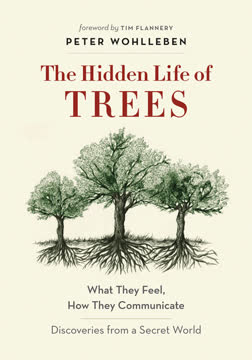
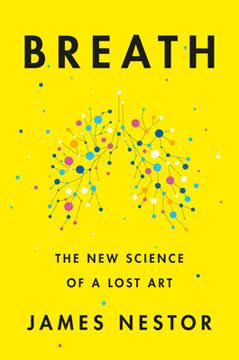
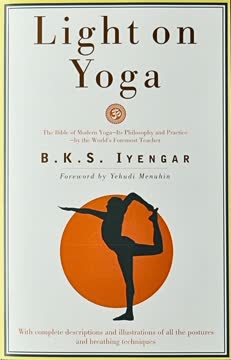
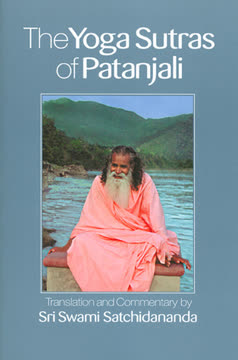

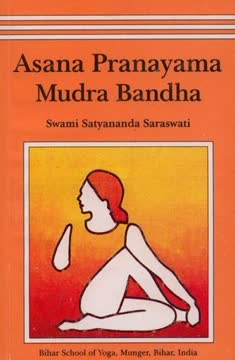


Download PDF
Download EPUB
.epub digital book format is ideal for reading ebooks on phones, tablets, and e-readers.
